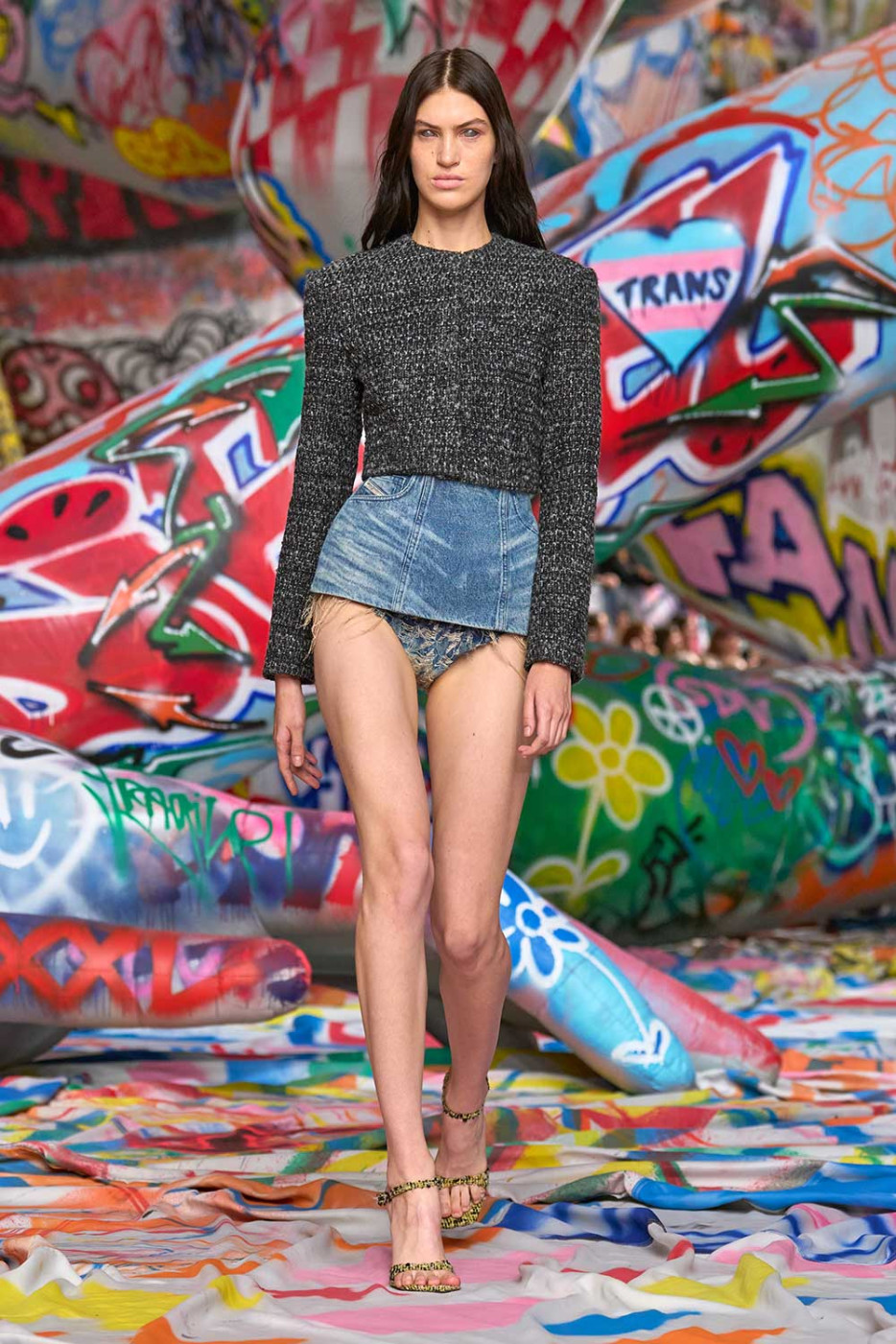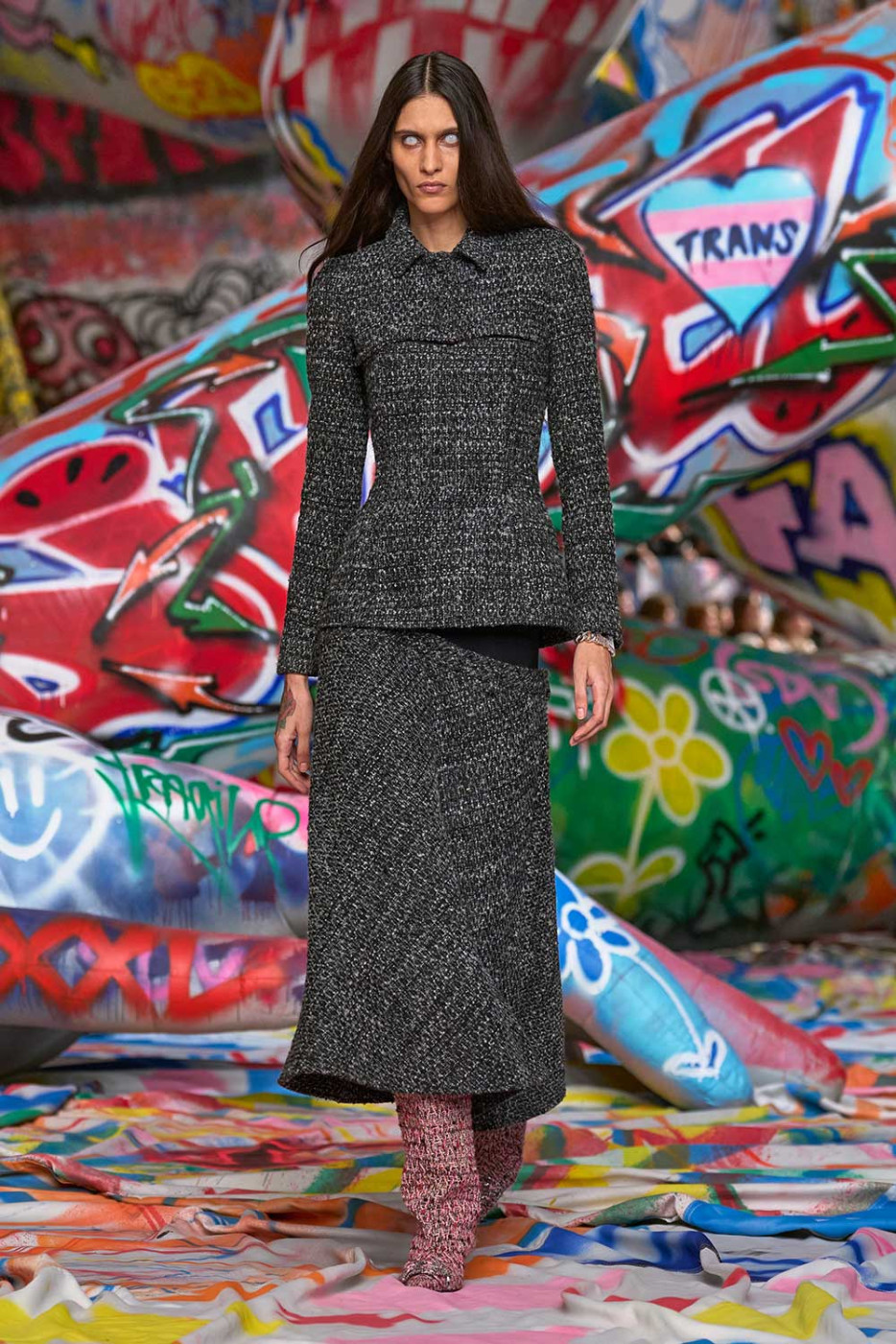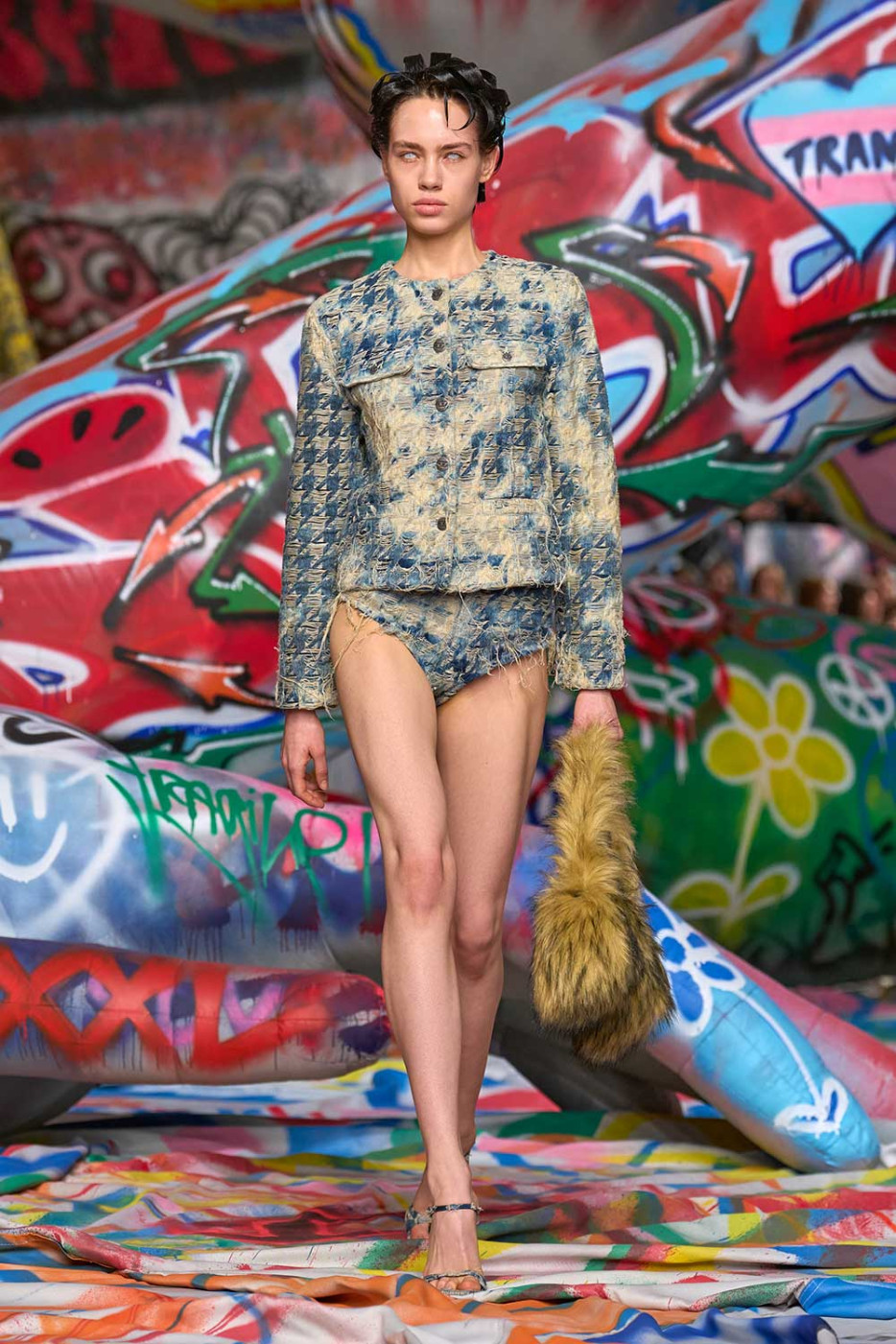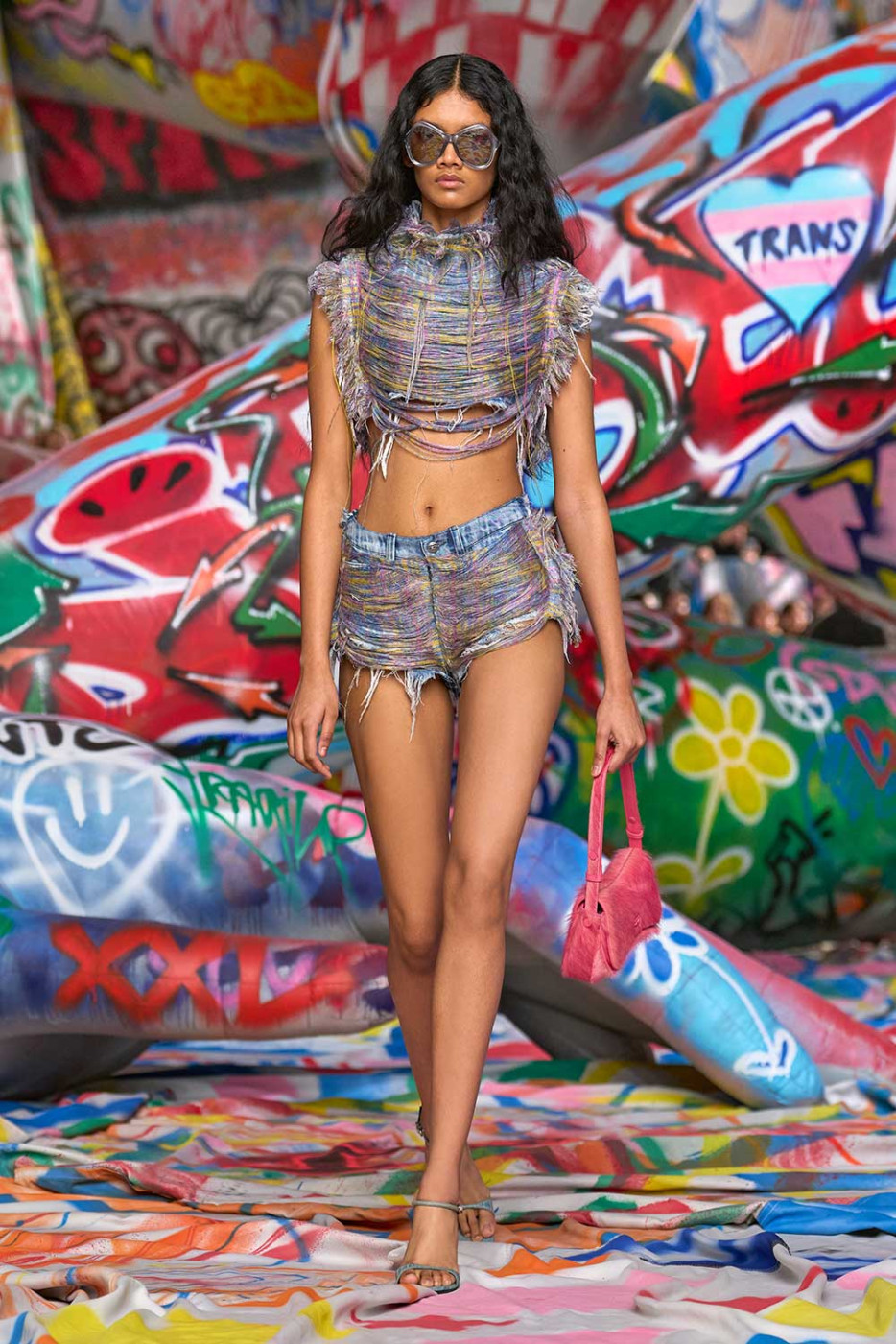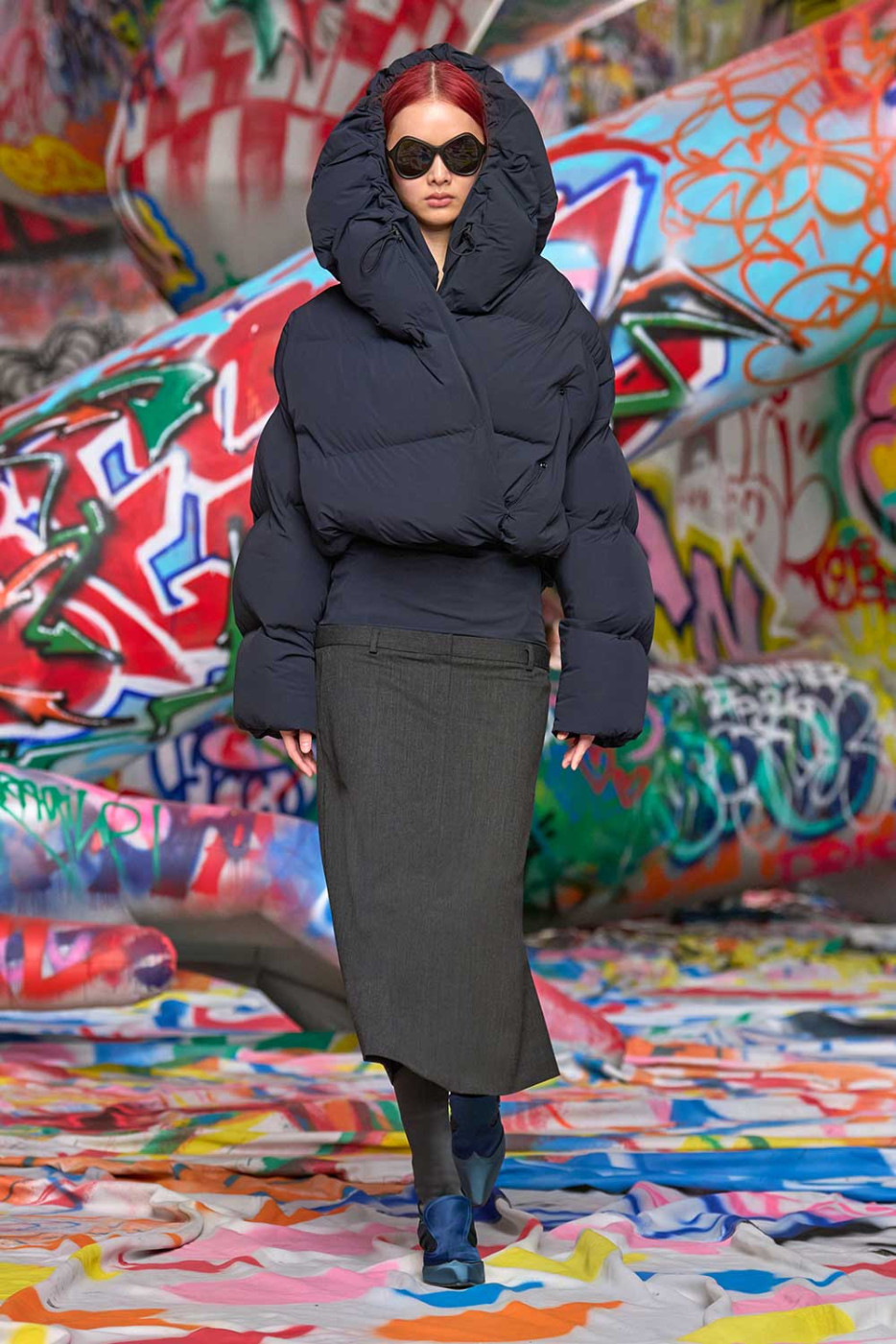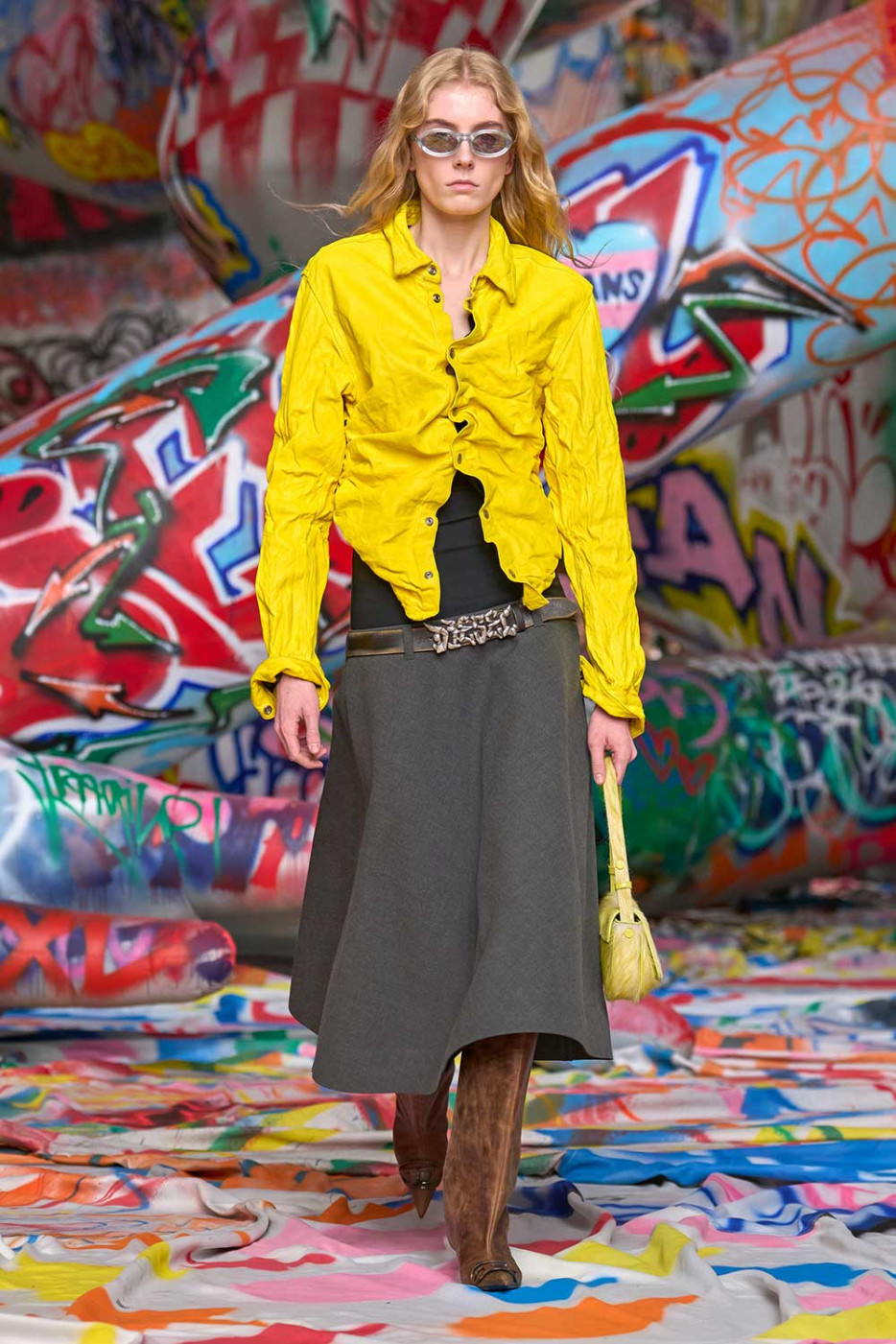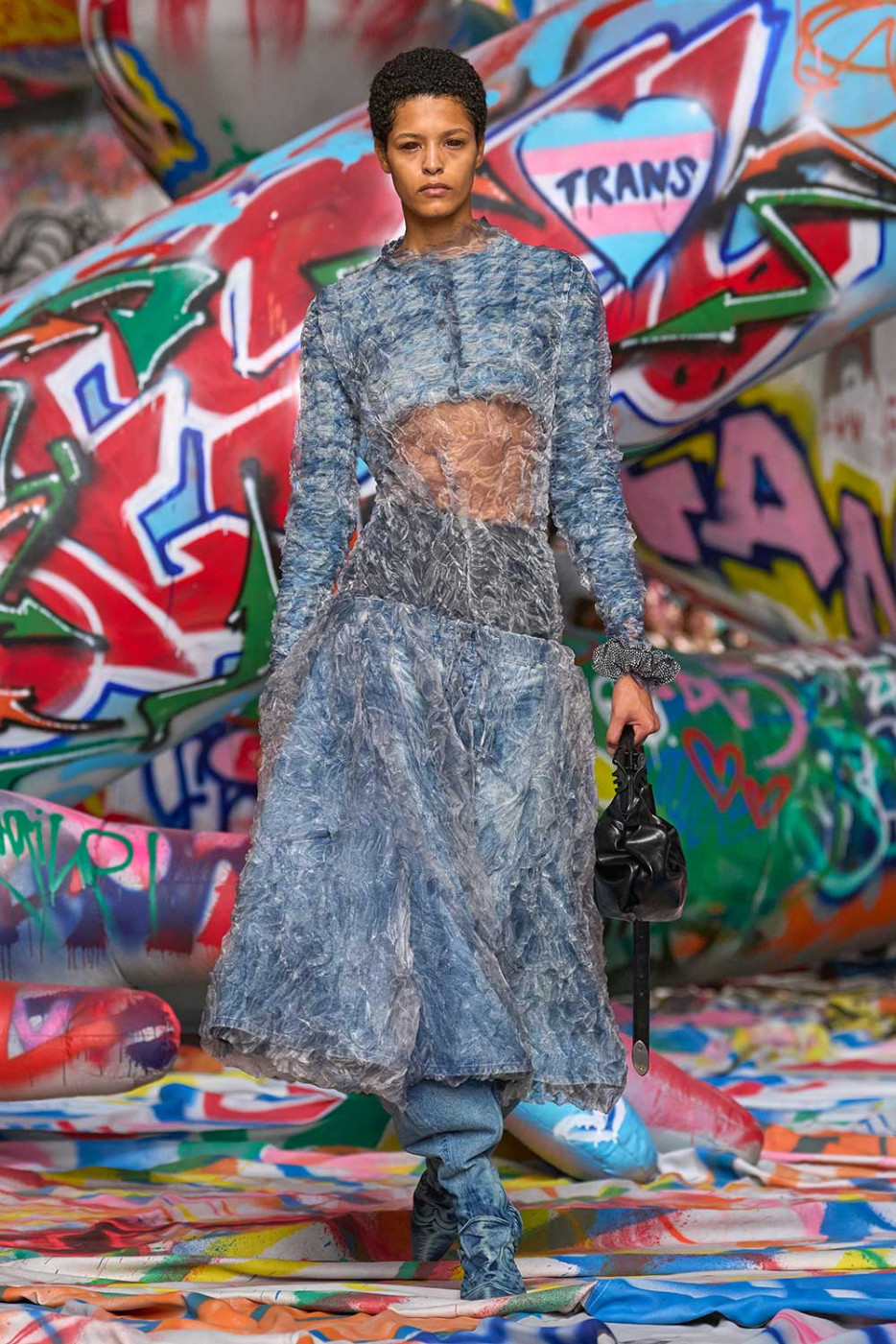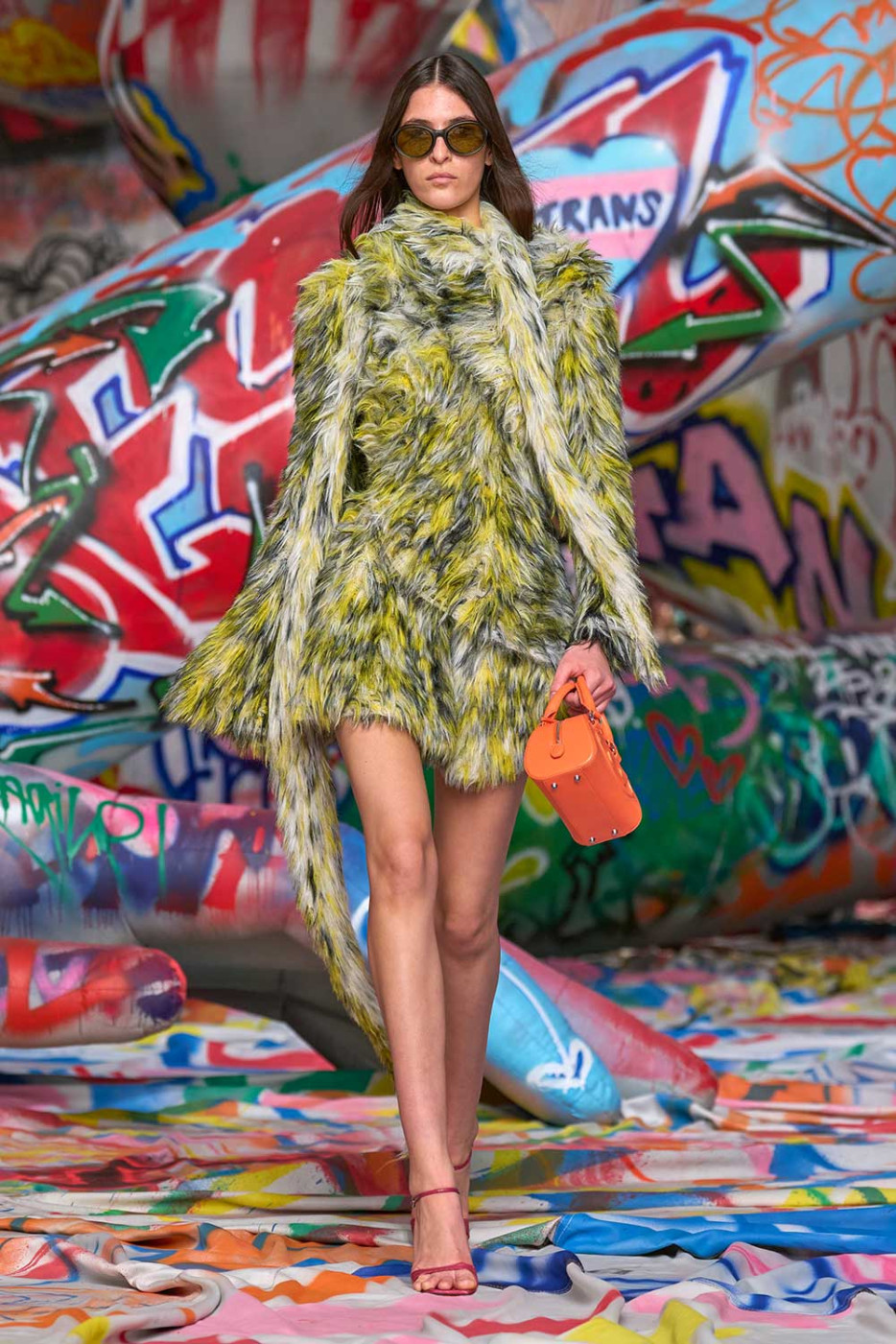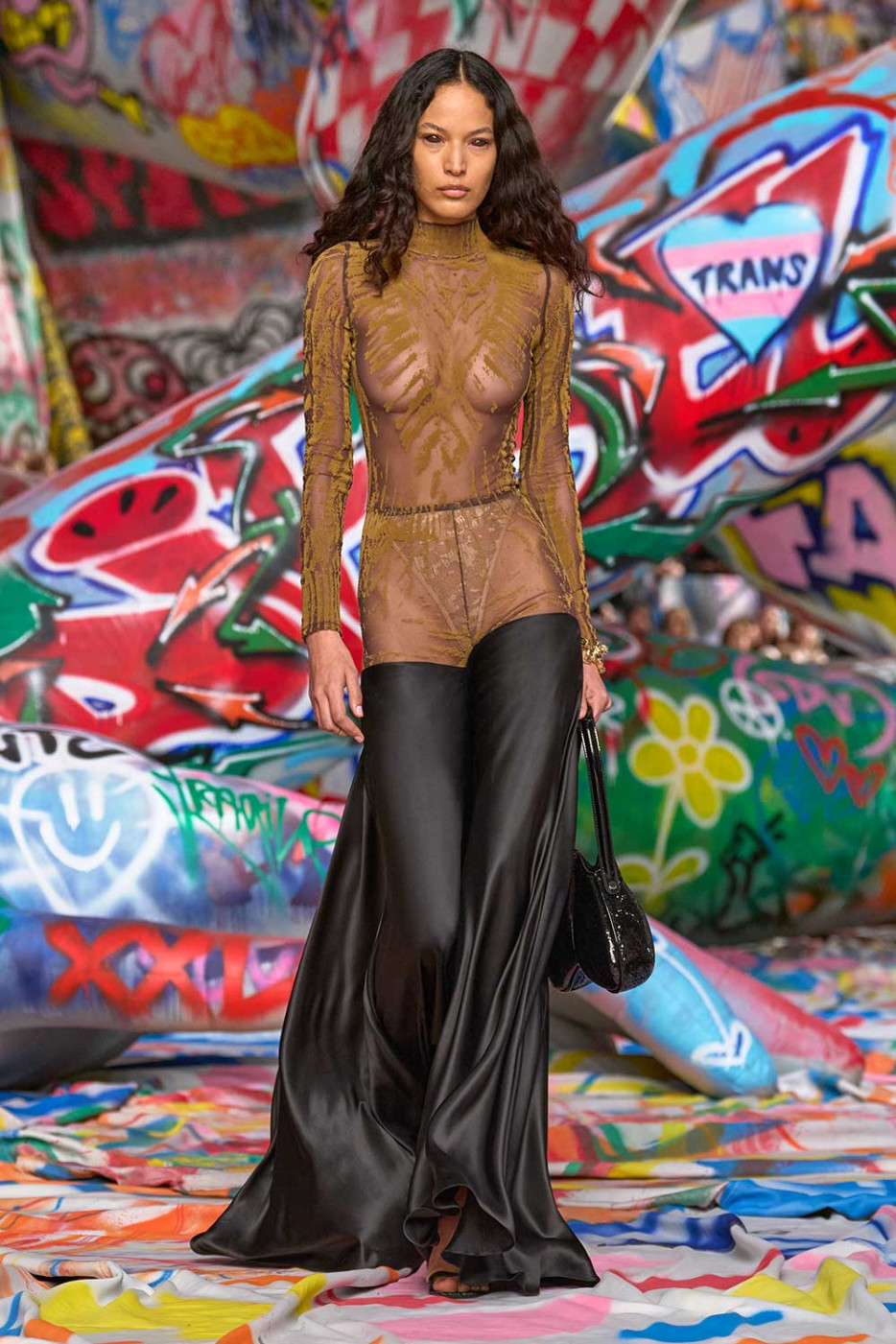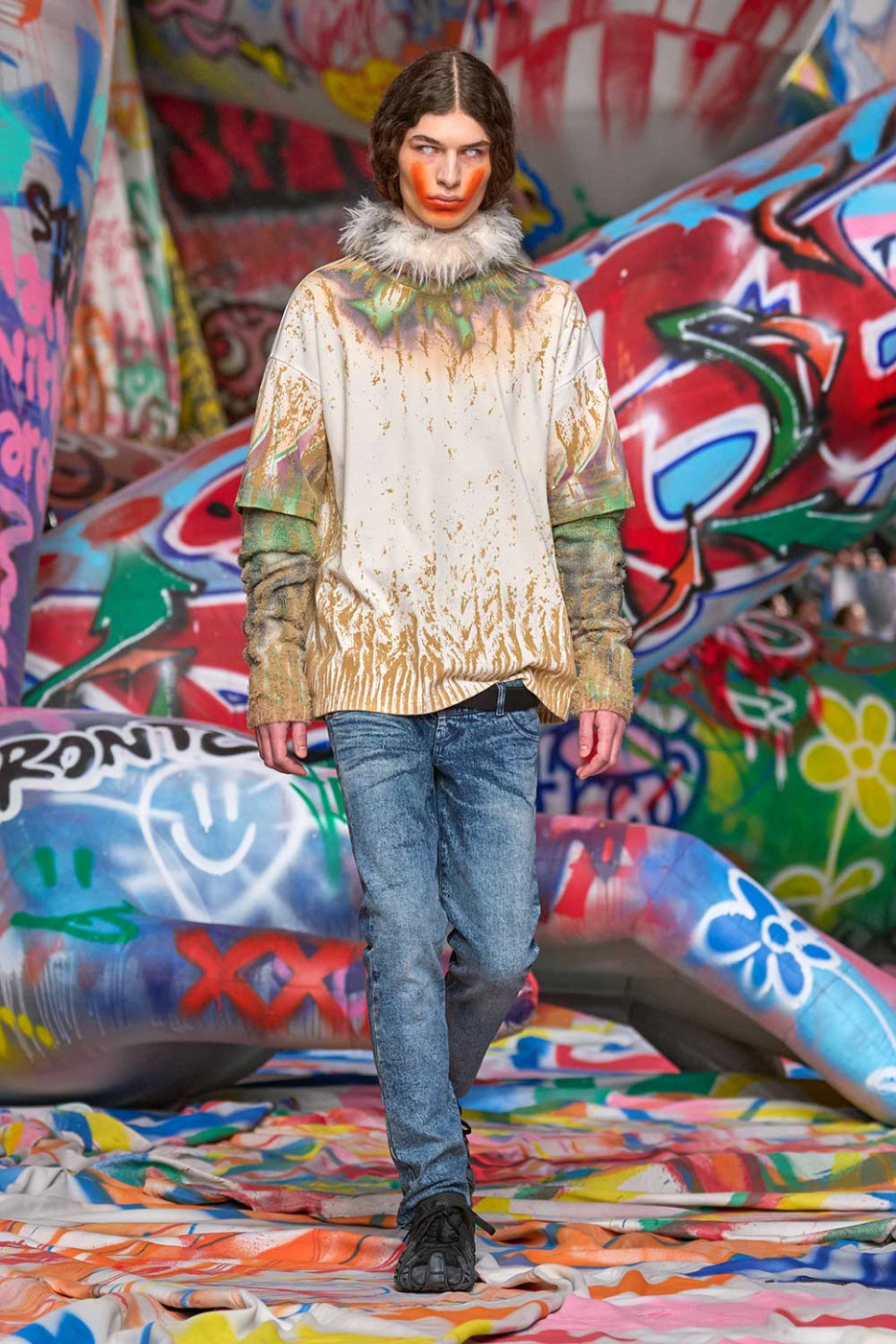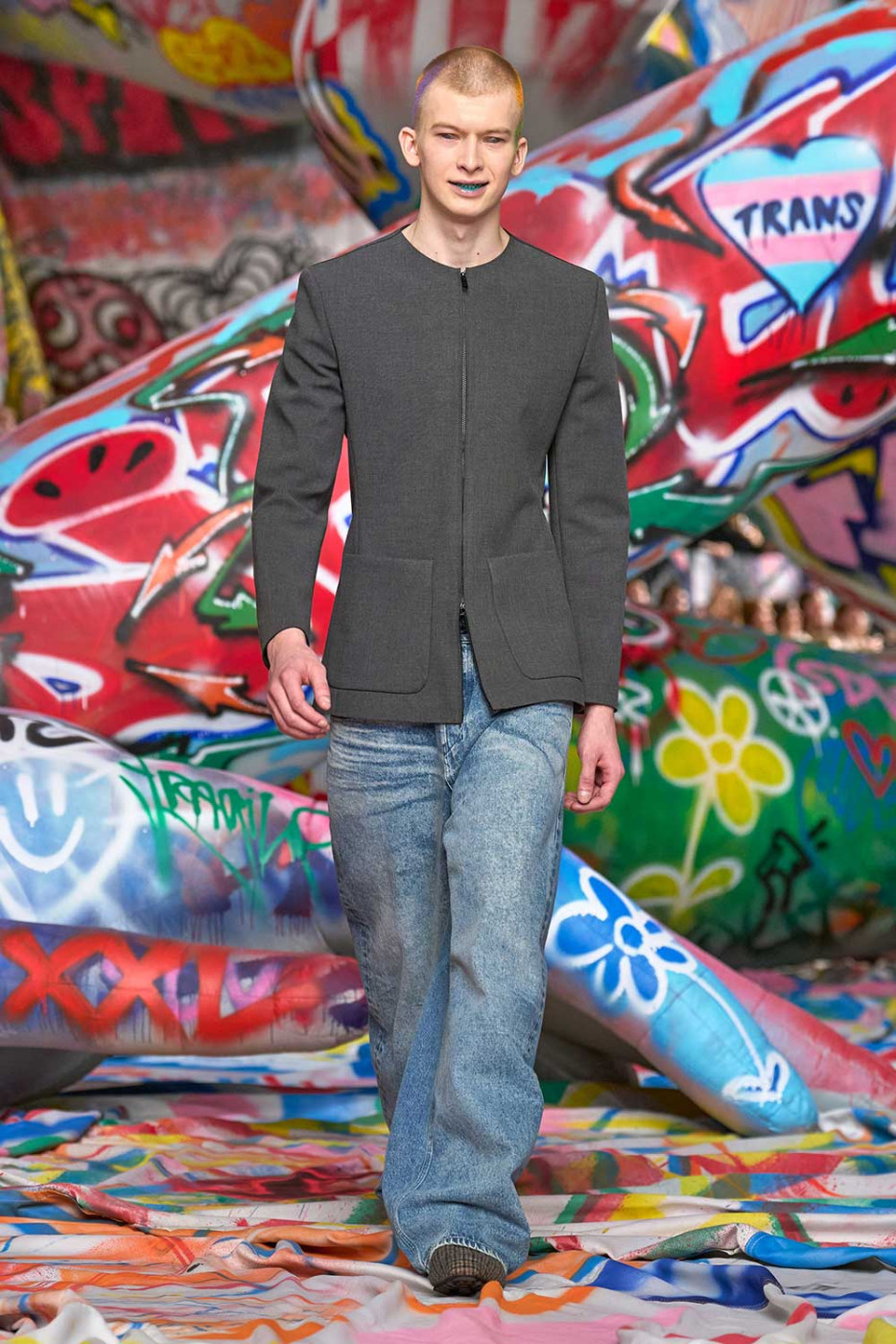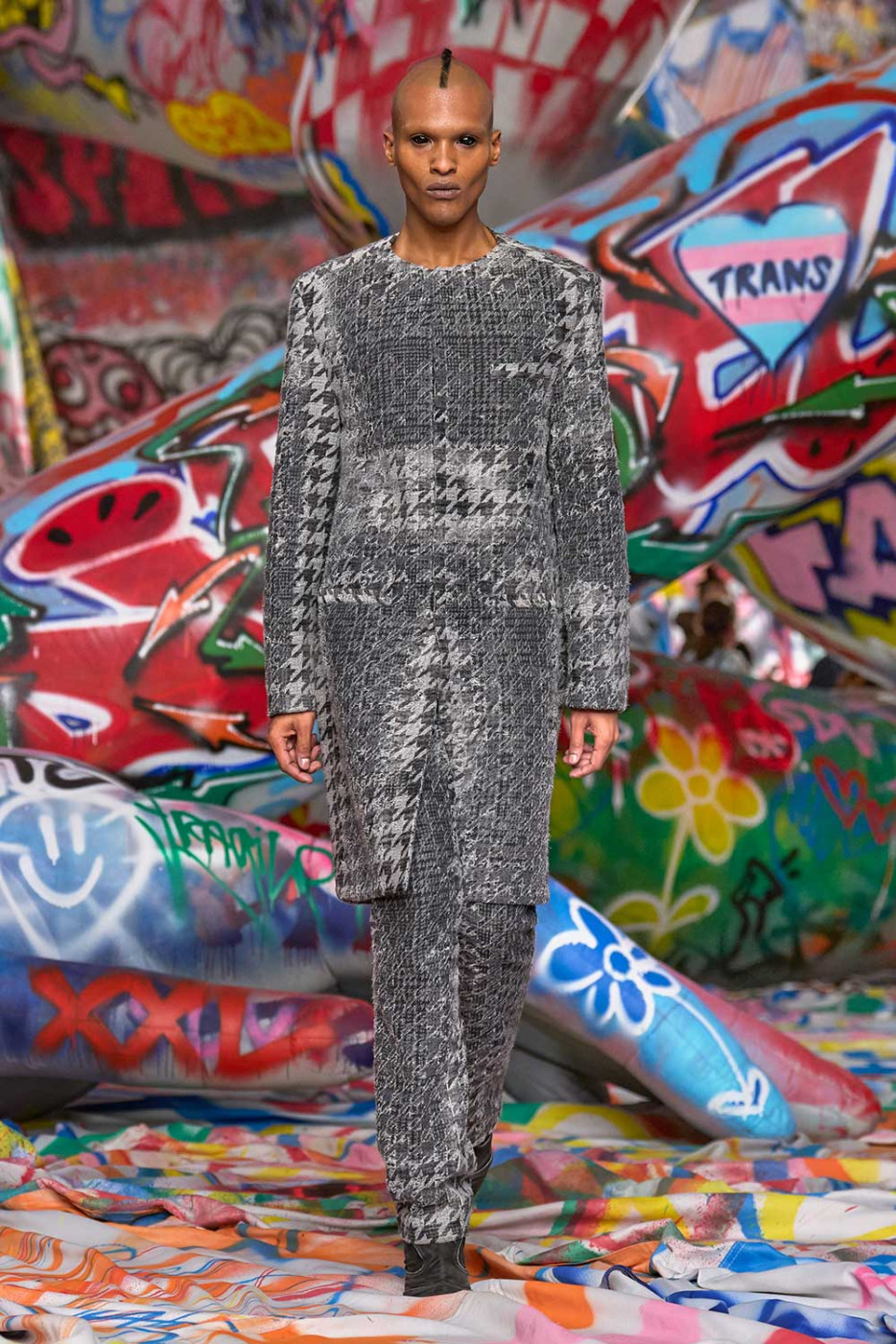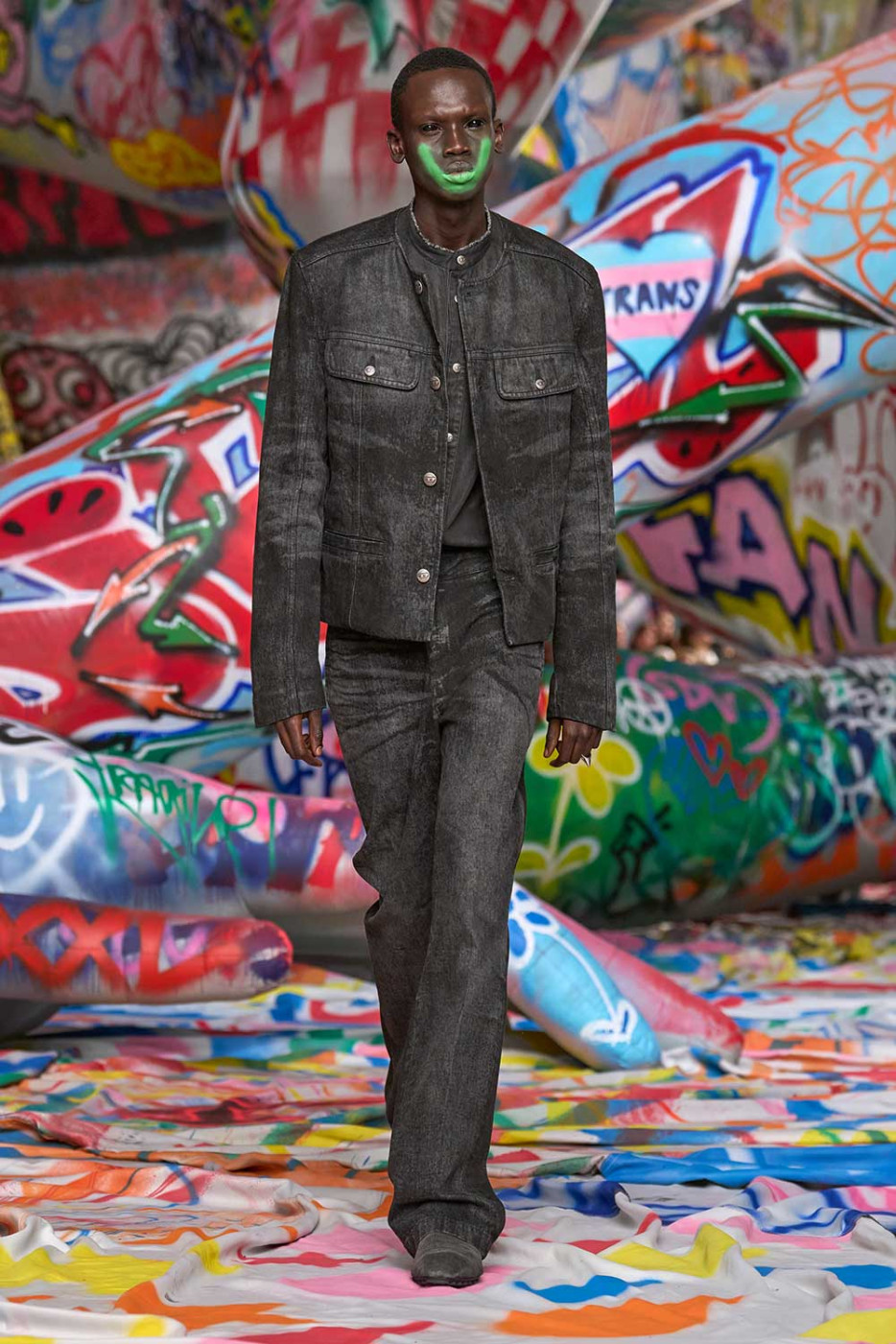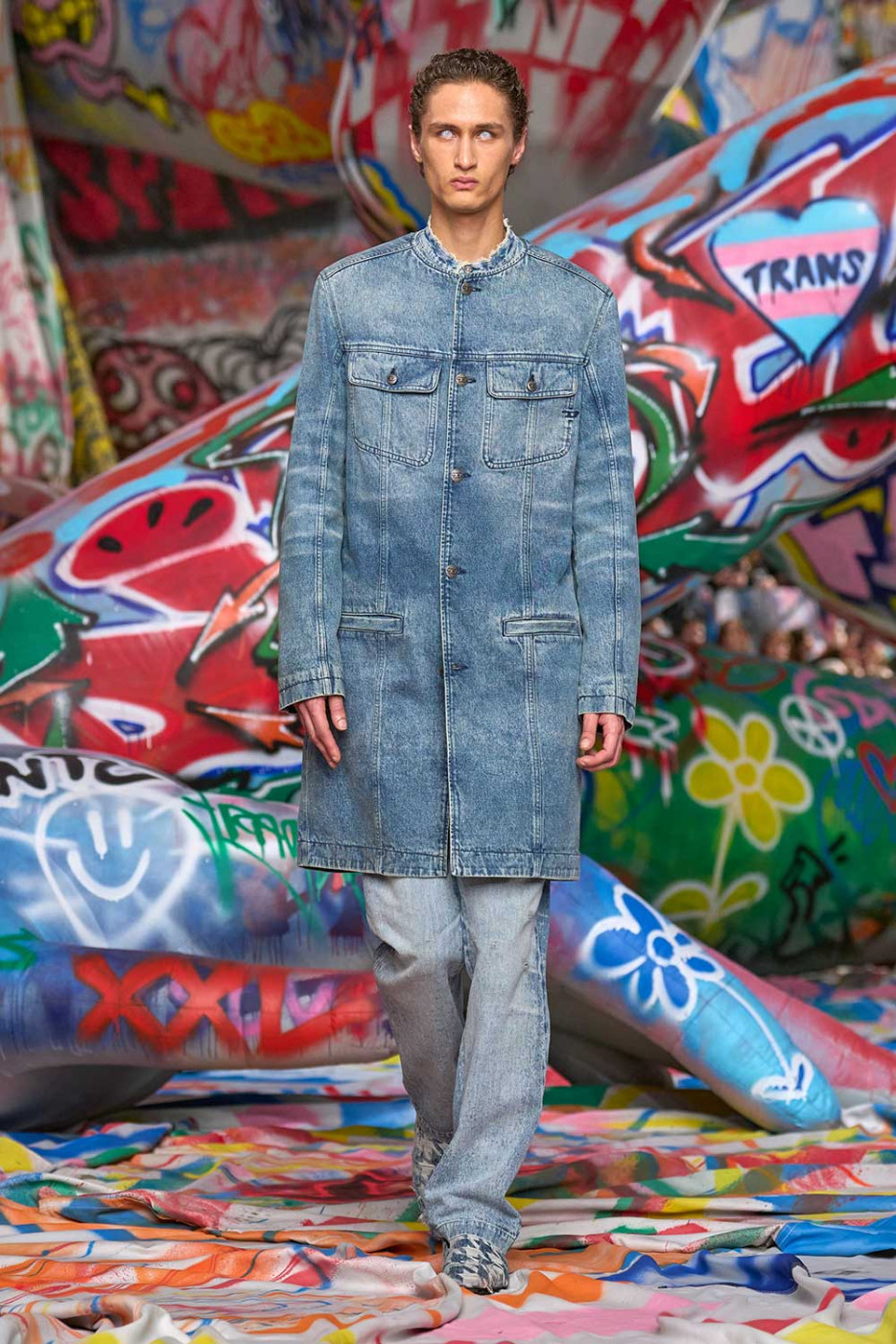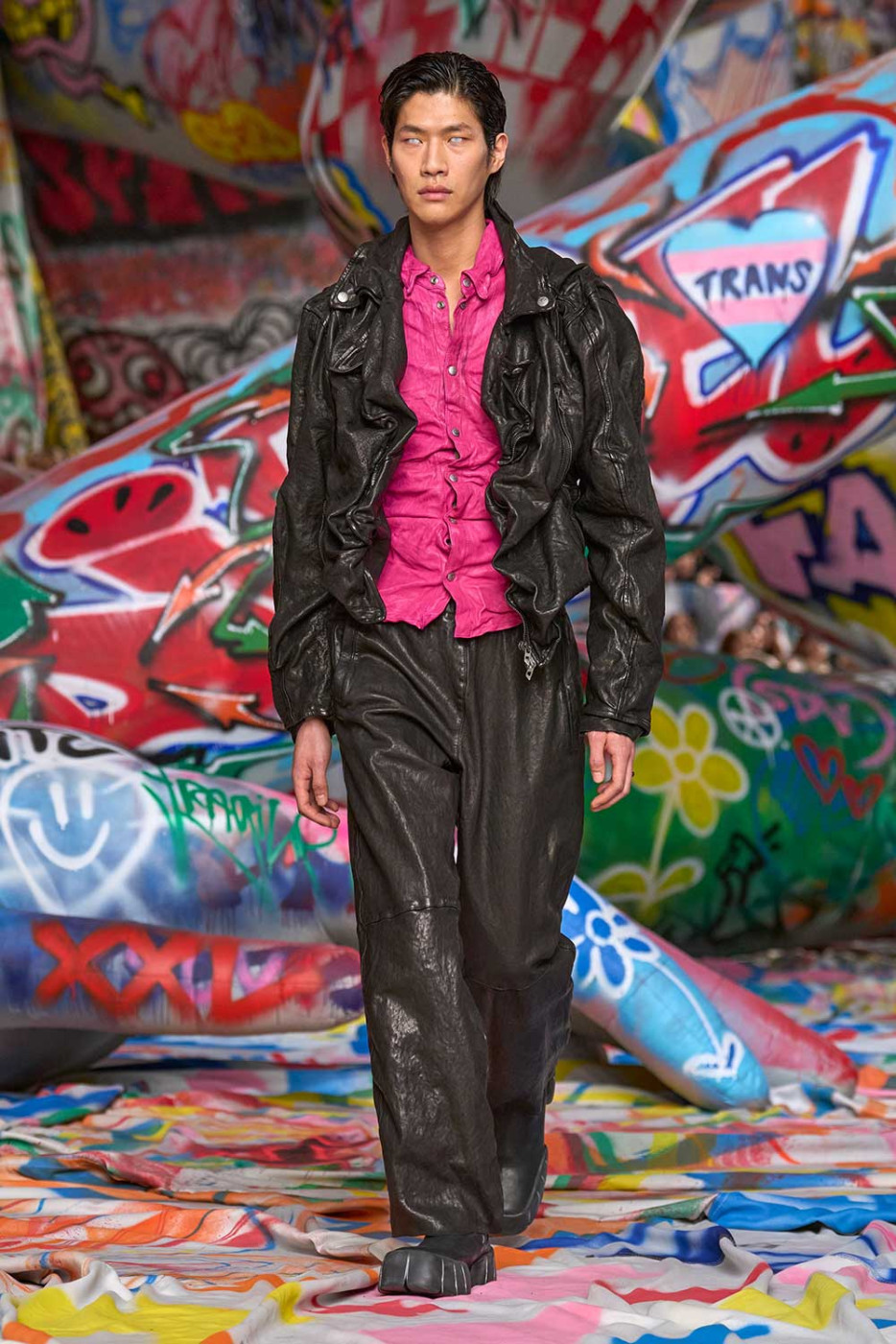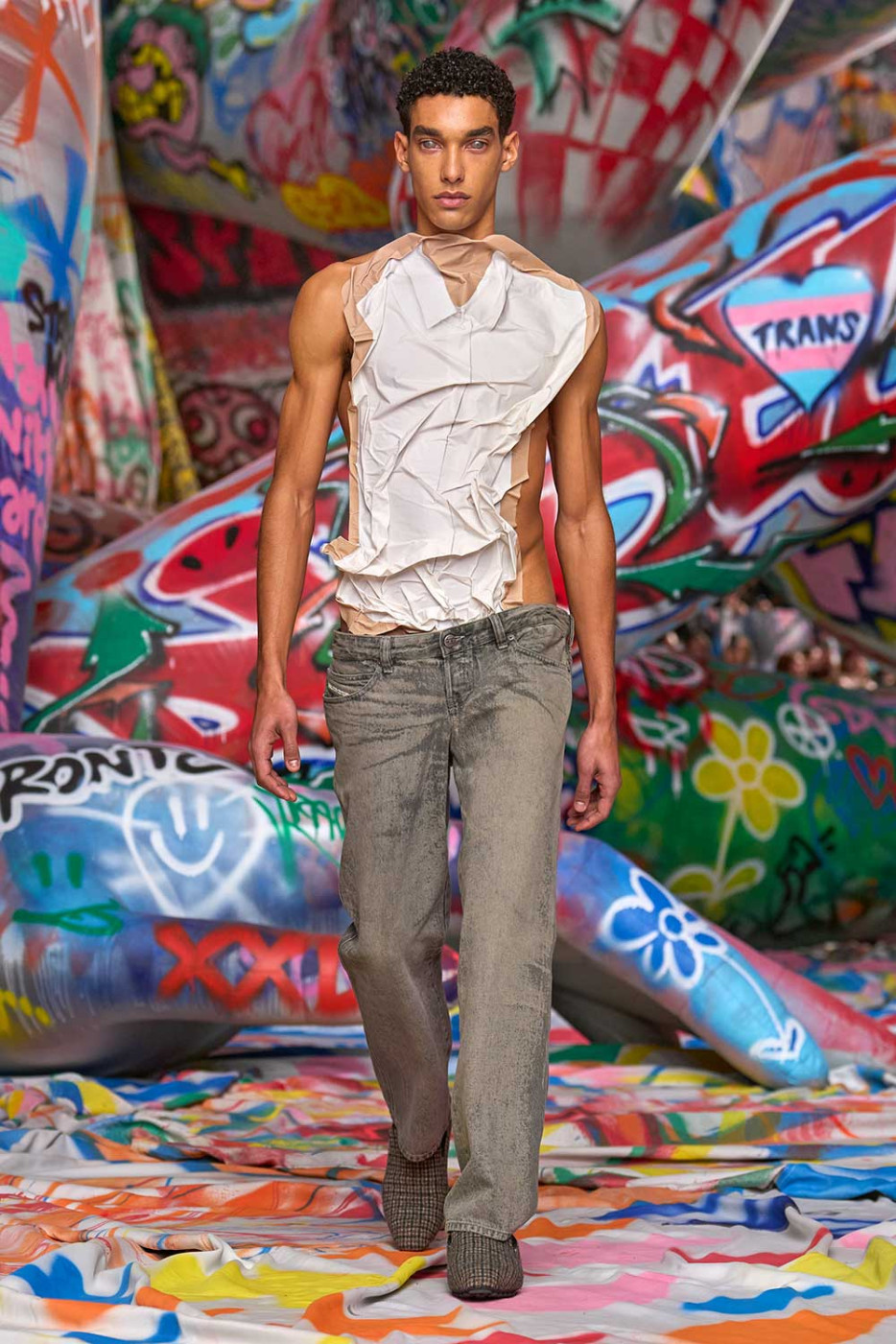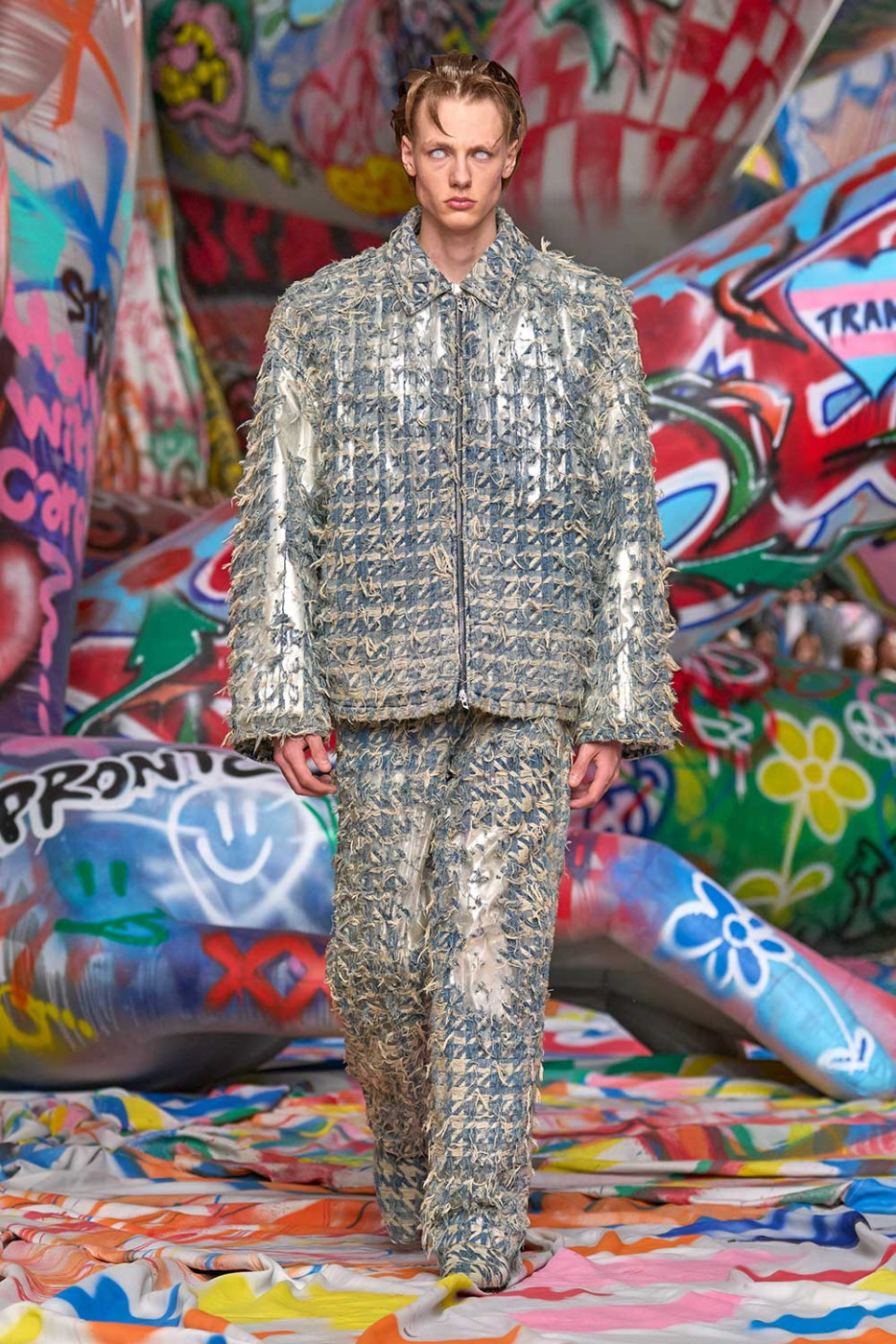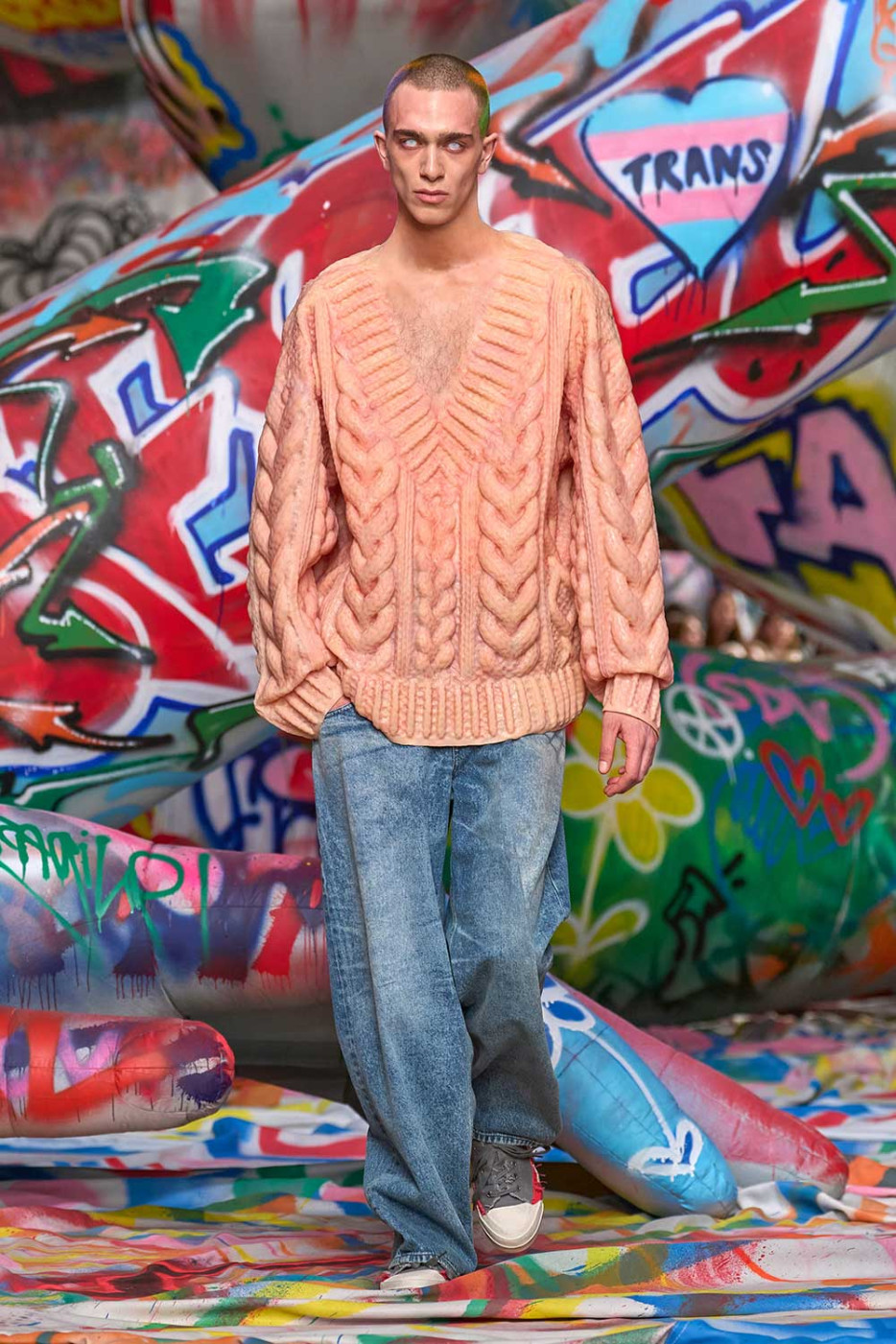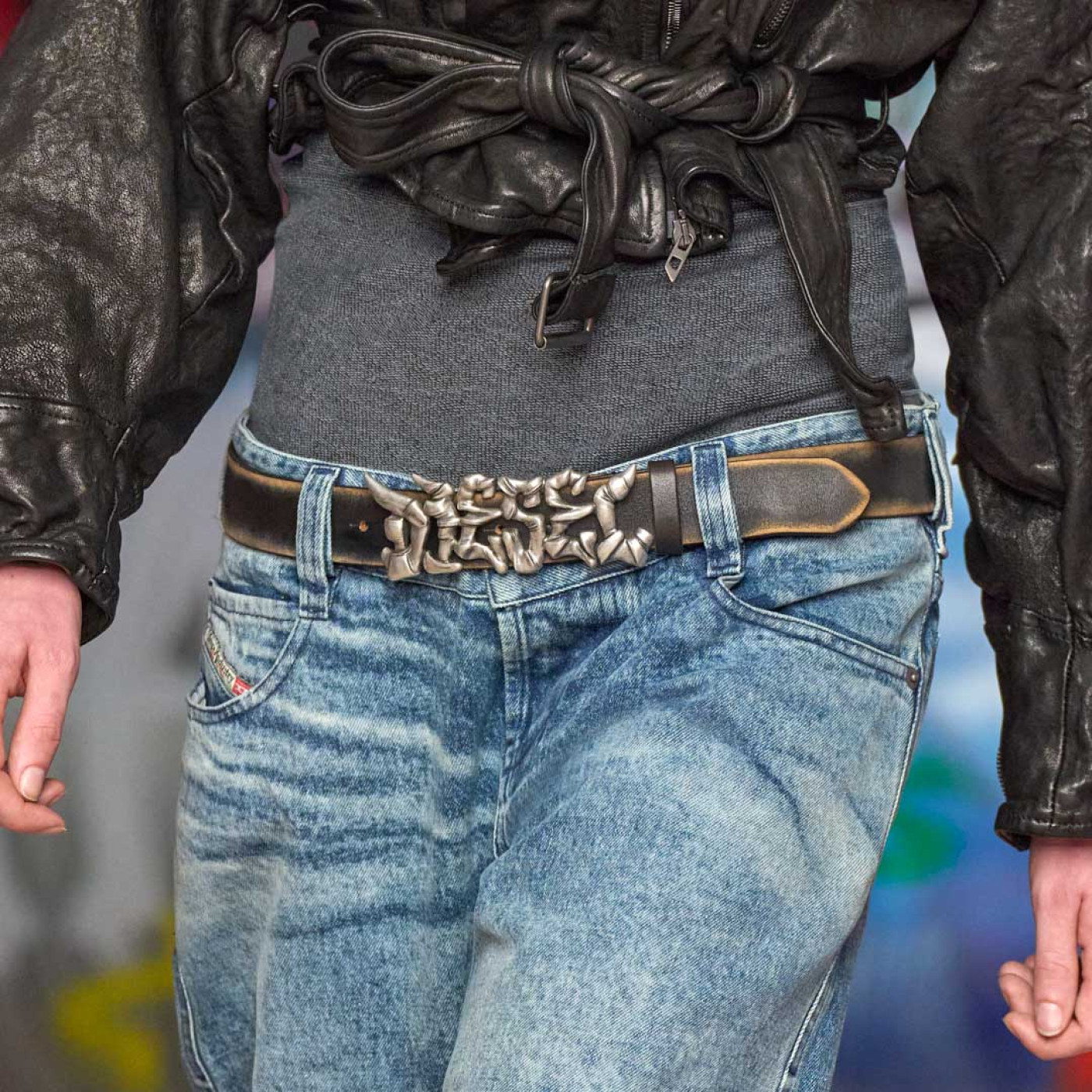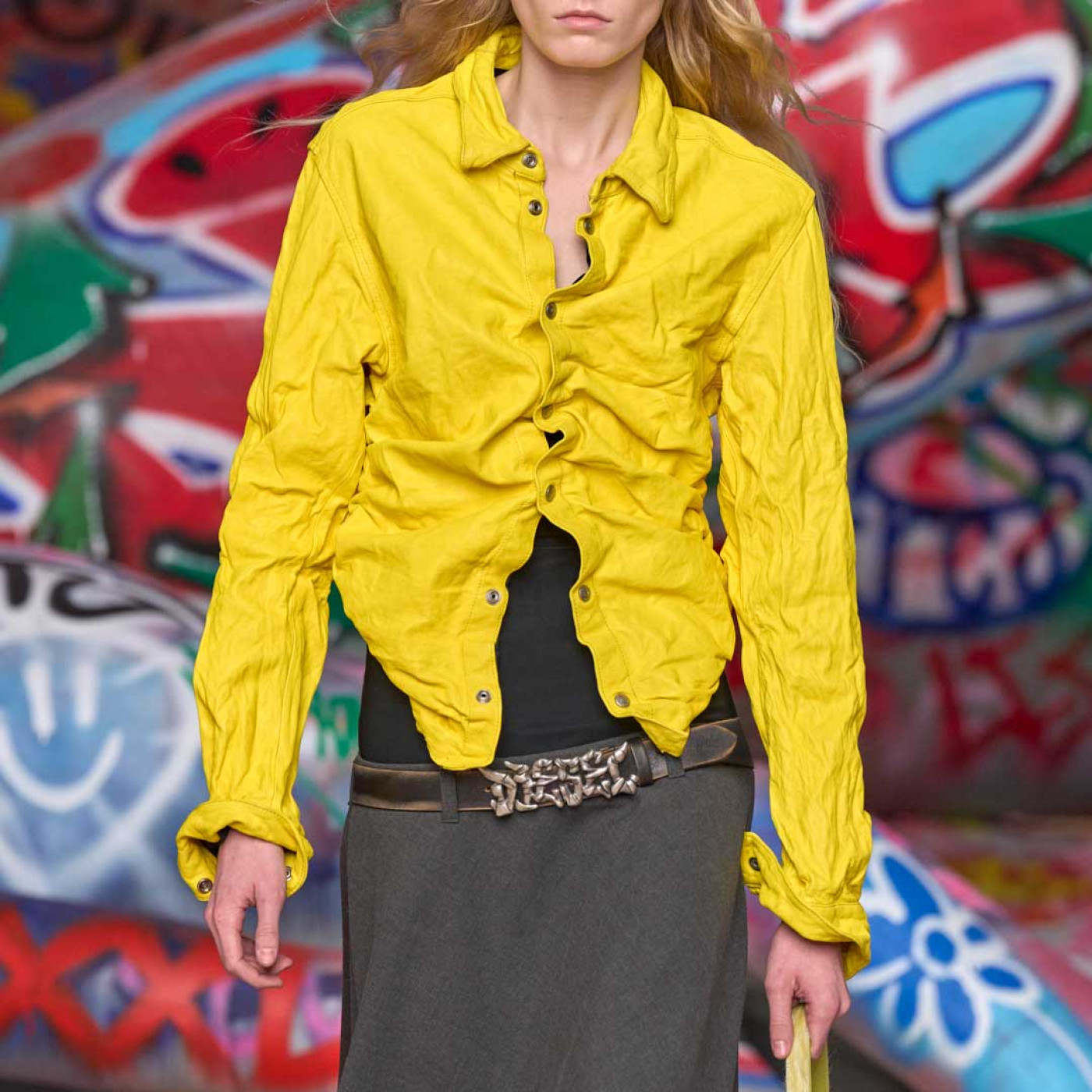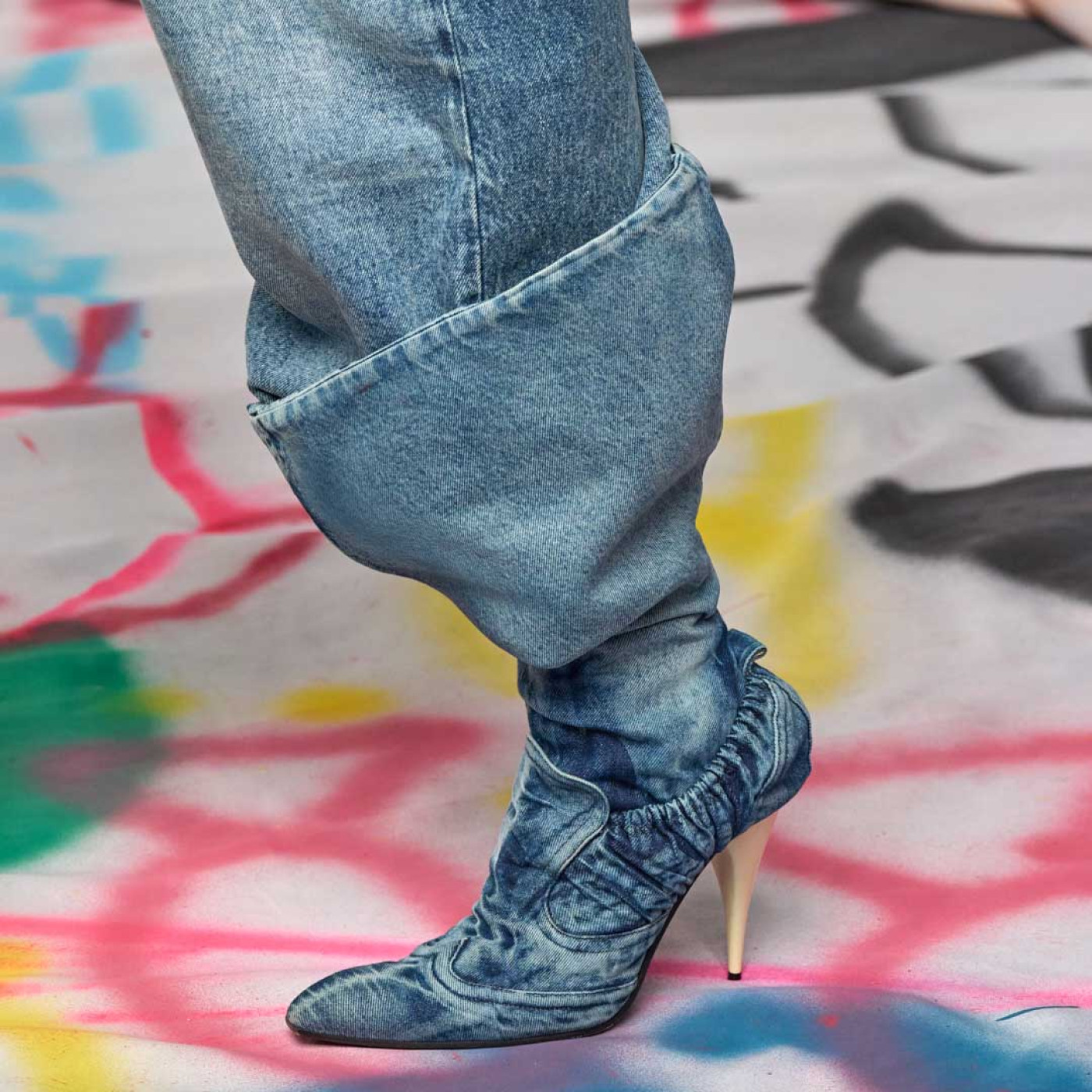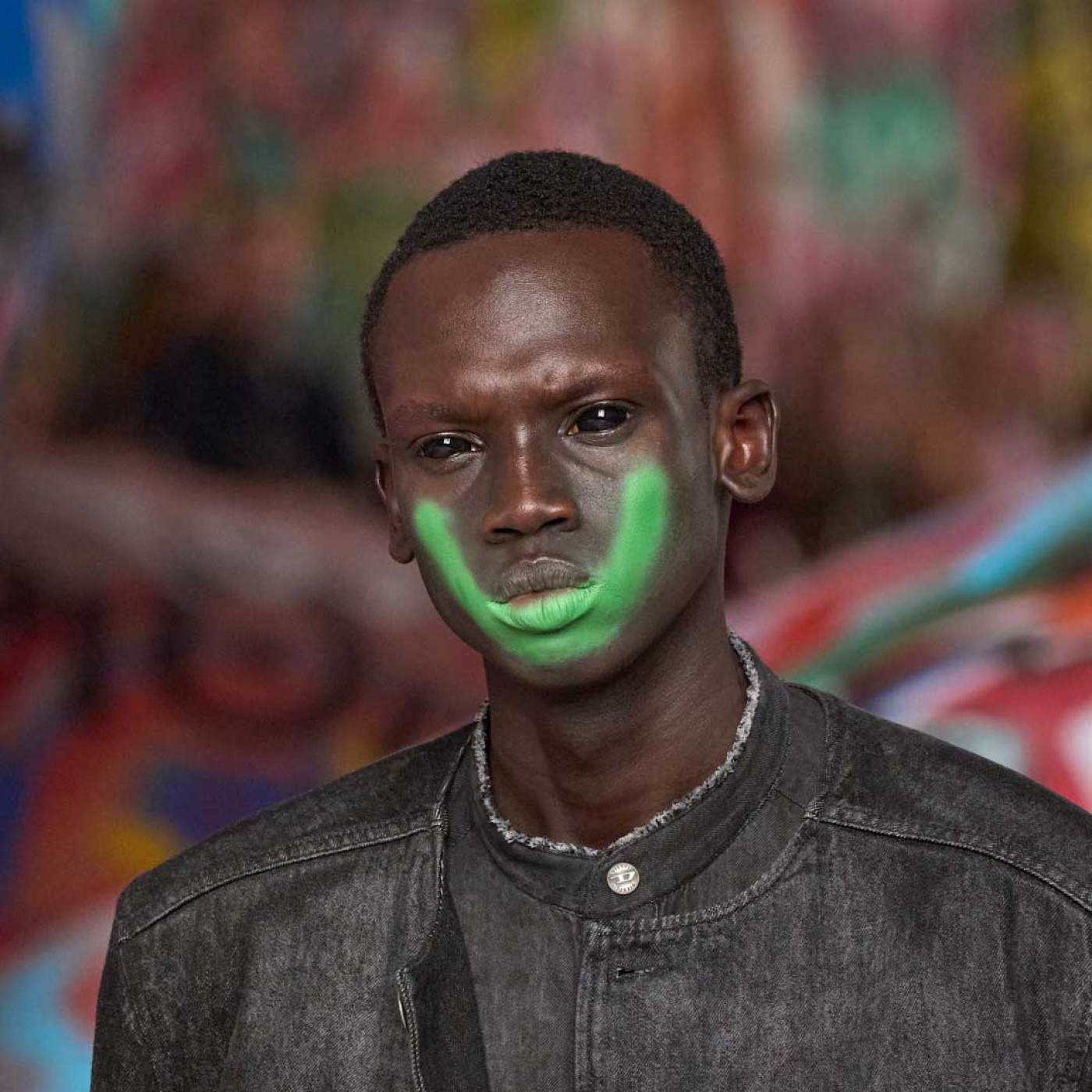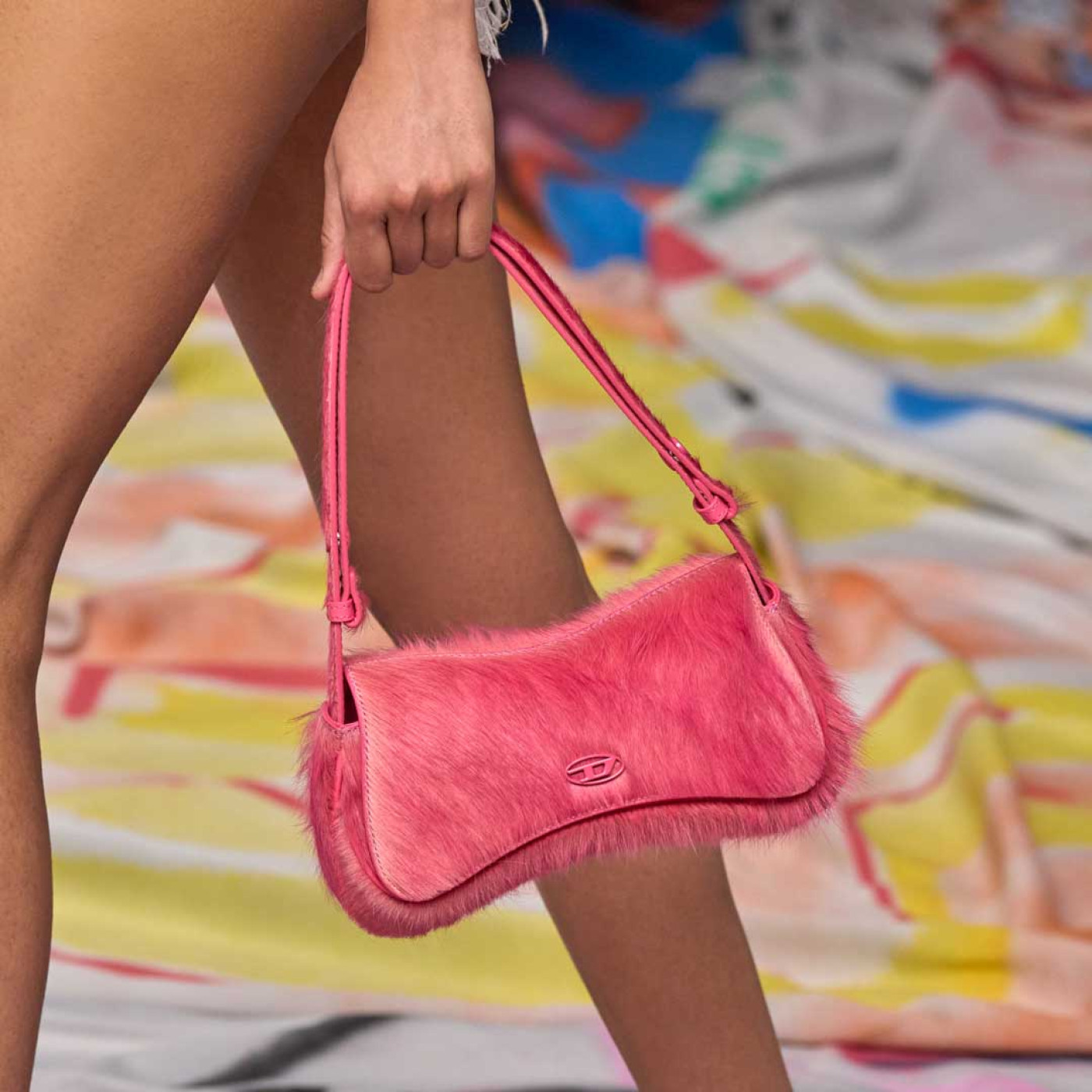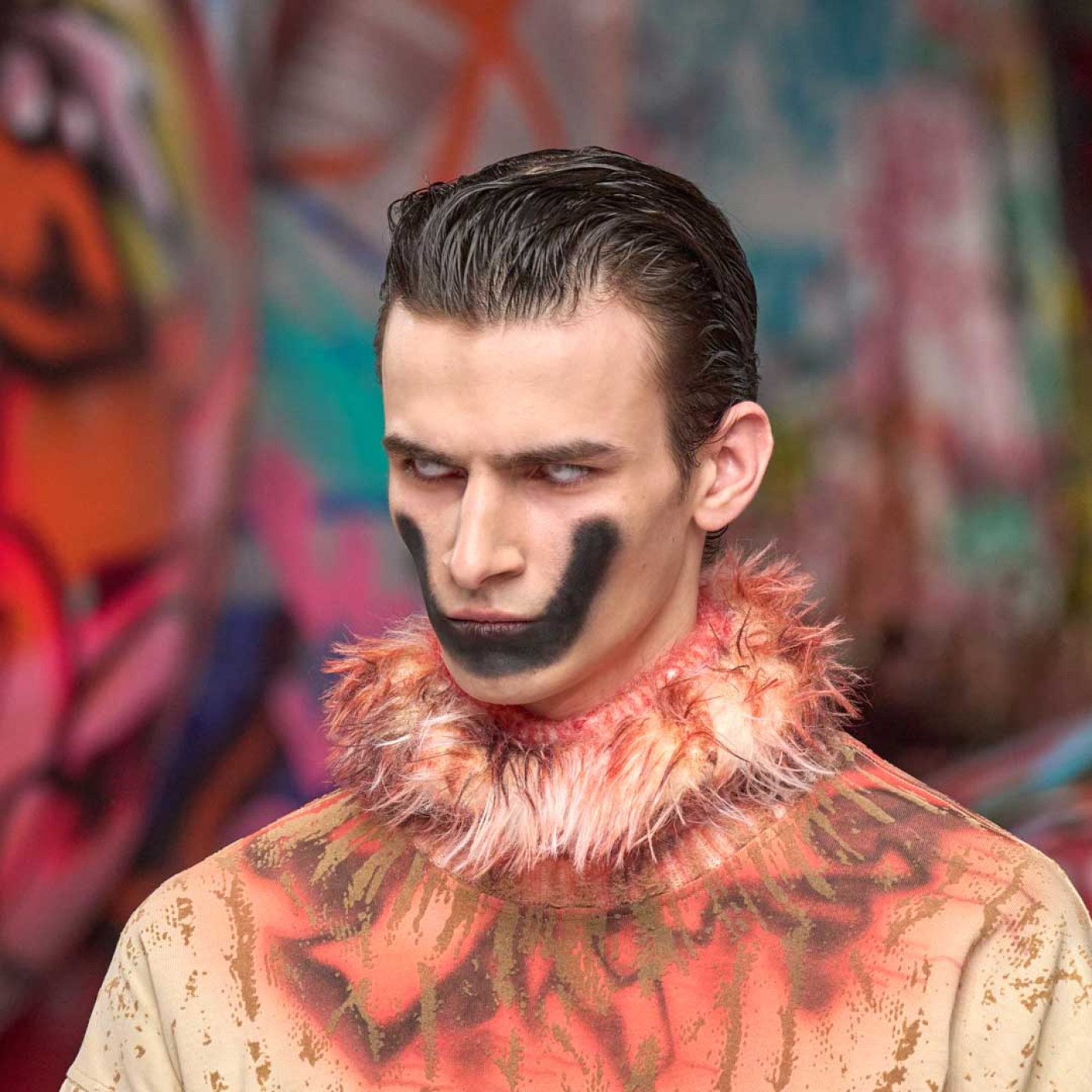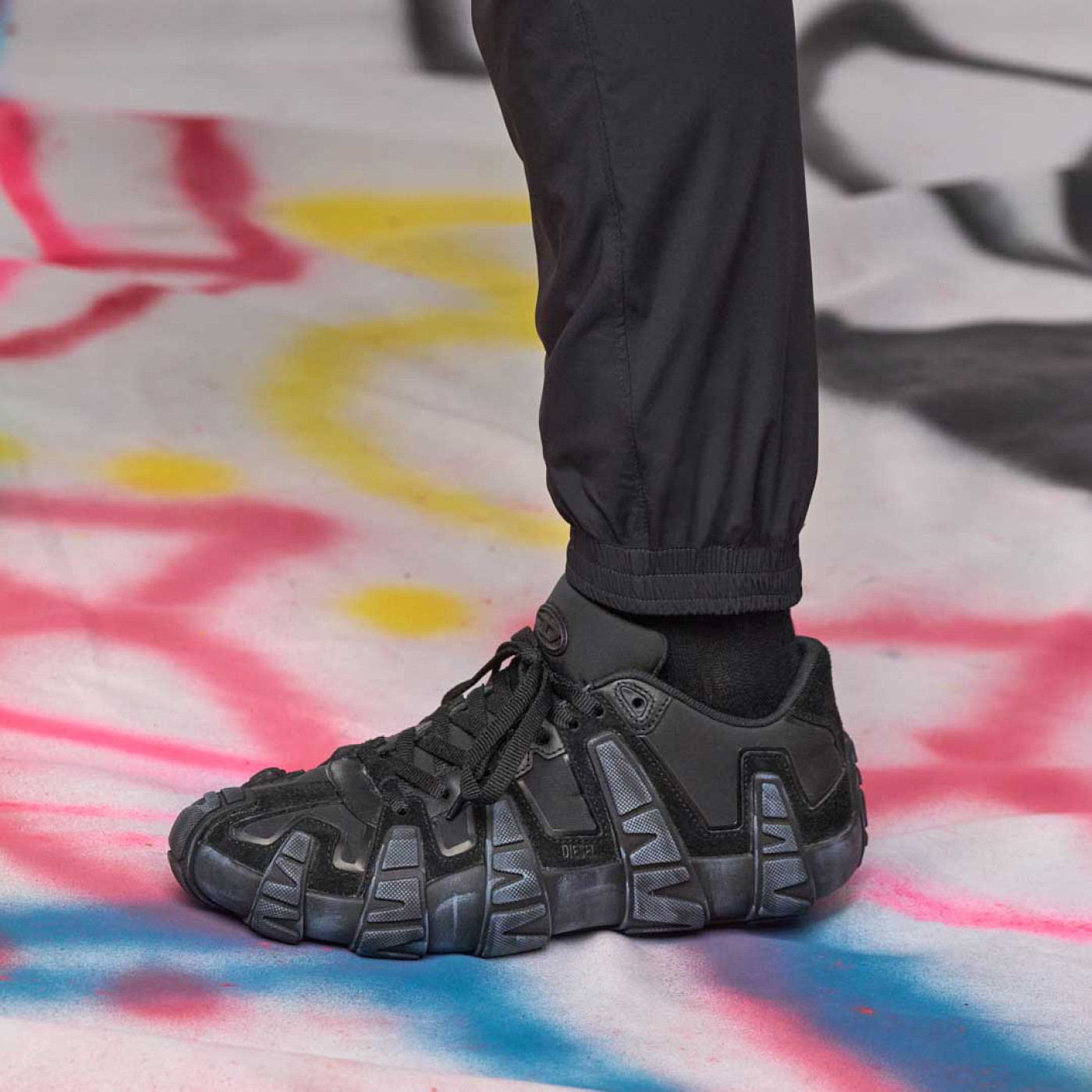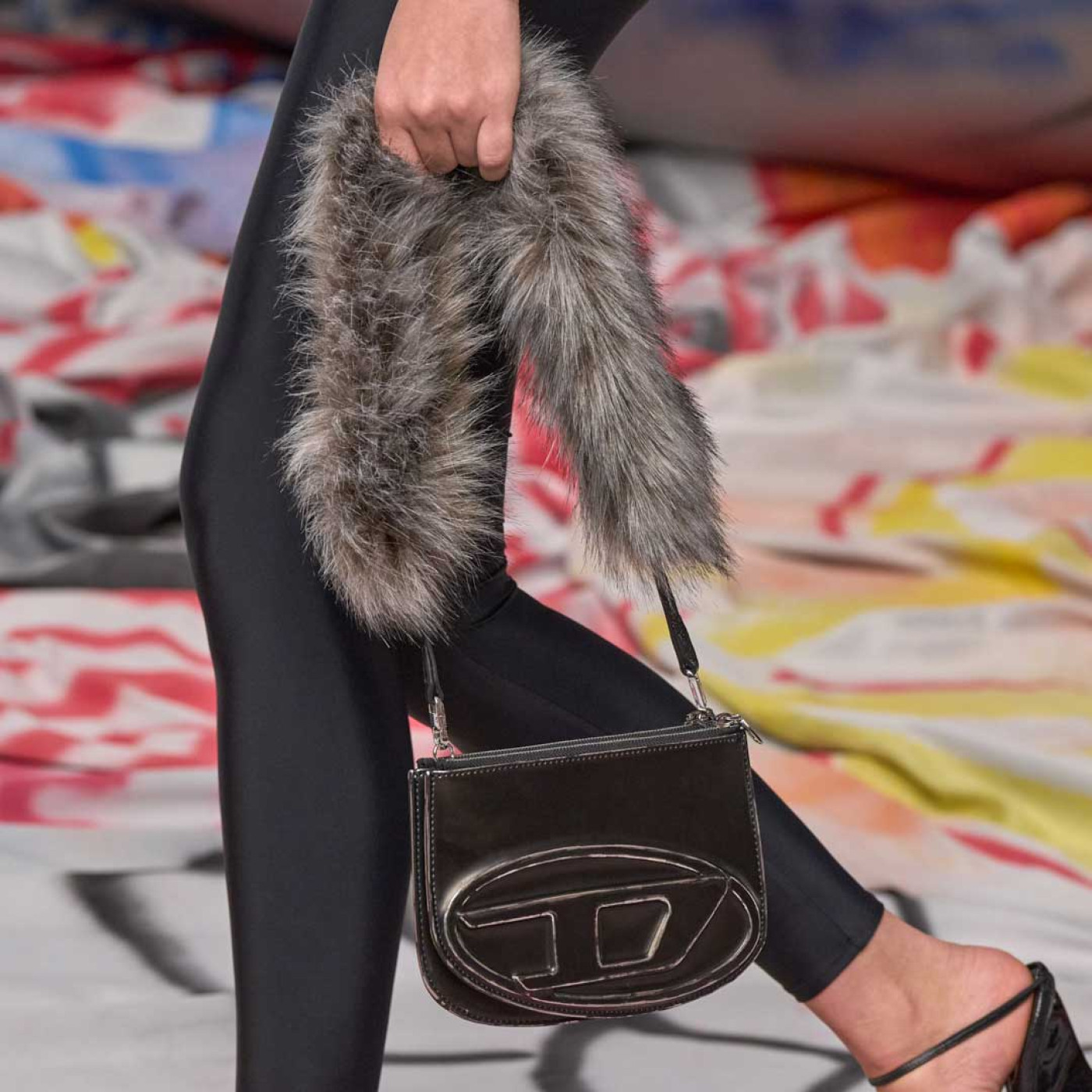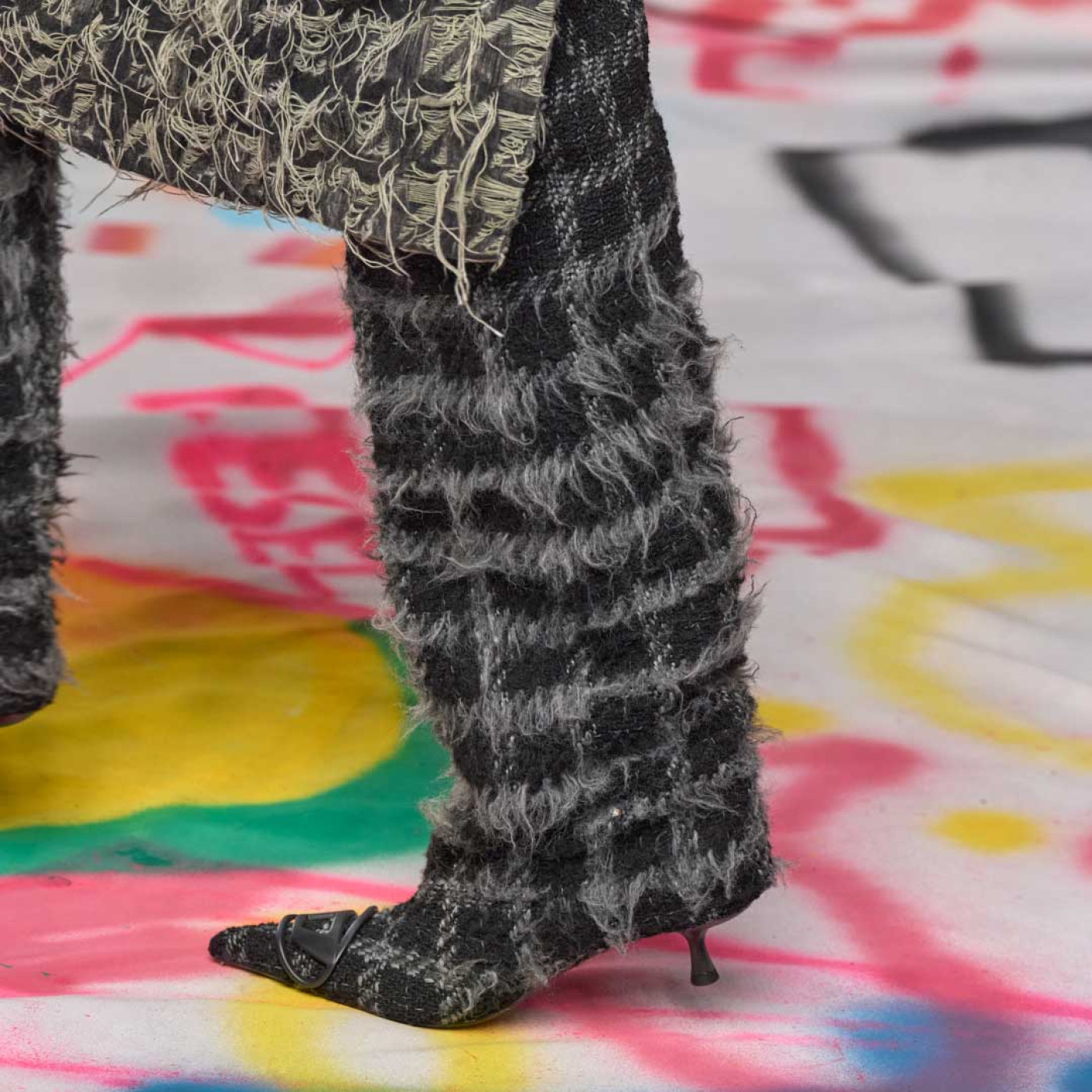
The Next Evolution of Diesel Democracy
The venue for Diesel’s show felt like an immersive, mesmerizing universe. In the past, the brand has stacked 200,000 boxes of condoms and spread 14,800 kg of denim scraps across the space.This season is held in the biggest ever known graffiti installation, with over three kilometers of graffiti fabric, made by a global street art collective of around 7.000 of amateur and expert graffiti artists.
“I love that thousands of people around the world have worked together to create the set design. We gave the global street art collective complete creative freedom – they expressed themselves each in their own way, on a project that’s taken months to achieves. This is the true democracy of Diesel,” says Glenn Martens, creative director of Diesel.
This season, Diesel’s collection, championing the concept of “fashion democracy,” felt like a provocative manifesto against the elite. The first look featured a cropped, collarless bouclé jacket paired with a denim corset and jacquard hot pants. Reminiscent of Coco Chanel’s iconic tweed suit, Diesel reinterpreted it with washed black denim peplums, cummerbunds, and skirts, democratizing the classic silhouette in its own way. The tweed skirts, at times worn so low they seemed to slip off. Traditional couture-inspired formalwear, a staple of high society, was reconstructed in grunge-infused denim jacquard, creating an extreme high-low remix—an audacious statement that seemed to raise a middle finger to hierarchies.
Martin’s experimental approach to denim in Diesel hints at what could be expected from his tenure at Maison Margiela. Plastic-coated denim jackets, bustiers, and jeans featured a fully laminated texture, with only the pockets cut out. Flocked tulle, evoking the traces of clothing, conjured the impression of cable knitwear, lending a sense of ephemeral elegance. Diesel’s extreme low-rise "bumster" jeans were secured by an adjustable internal underwear system, paired with chest-sized plasters to push the boundaries of avant-garde styling.
Techniques often reserved for haute couture, such as ruffles, were reimagined in acid-colored bandeaus, wrap dresses, and an orange jacket. The boiled knit and leather jackets, distorted with crinkled and permanently wrinkled embellishments, feature clever tricks achieved through shrink-wrap finishing. Paired with Joker-inspired makeup, they exude an eerie charm that sets them apart from the rest.
By positioning denim—the ultimate symbol of rebellion—at the forefront, Diesel wiped out all elements of rigid dress codes. By satirizing traditional formal fabrics, the collection shattered the industry's unspoken boundaries, creating a sense of otherness while clearly asserting its vision of "fashion democracy.” With thought-provoking, artistic textiles and an unprecedented sense of freshness, this was undoubtedly Glenn Martens’ most creative and groundbreaking Diesel collection to date.
Courtesy: Diesel
Text: Elie Inoue


